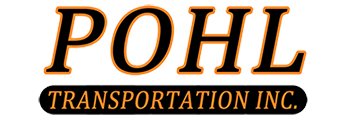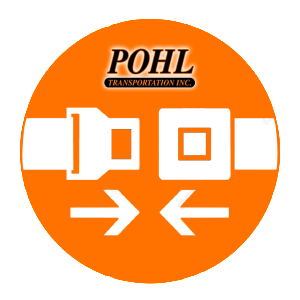The importance of seat belts can’t be overstated.
We recently were involved in an accident in which another tractor trailer had stopped on the road at night with no lights on. Our driver saw it at the last second and swerved to miss it. The tractor was totally destroyed. But he is alive and well.
How?
Because he had his seat belt on.
Seat belts could be the most significant safety device ever invented. In fact, they are your personal protection equipment (PPE). PPE examples are welding masks and gloves, harnesses for working off the ground, hard hats for construction sites etc. Seat belts are there to save your life. And they will. And they cannot be taken for granted.
– They provide impact protection.
– They absorb crash forces.
– They keep you from being thrown from the vehicle.
– They hold you in place while the vehicle collapses around your “safe” zone.
To put it simply, seat belts help keep you in place, in control, and in a much better position to avoid an injury. They can keep you from being knocked unconscious which allows you the chance to escape from a crash with your life.
The following points
are how NOT to wear your seat belt:
– Do not wear the shoulder straps under your arms or behind your back.
– Do not allow the buckle to rest on your stomach.
– Do not wear the shoulder belt too tight or let it rub against your neck.
– Do not allow the belts to become too loose.
The following points are HOW to wear your seat belt:
– Do wear the lap belt low on the lap. 2-4 inches below the waist and against the thighs. The strong bones of the hips can absorb the forces experienced in a crash.
– Do wear the shoulder straps across the center of the chest and the center of the shoulder.
To correct a shoulder belt that is too tight or is rubbing against your neck:
Bring the belt close over your body, pull the shoulder belt out at least 5 inches, and let it return to your chest.
Pull down on the shoulder belt only as far as necessary to ease the pressure and let it go. The shoulder belt will then stay in position.
Every so often, get rid of additional slack by pulling the belt out at least 5 inches and letting go. Slack is then automatically removed.
Not Wearing a Seat Belt is Costly!
Motor vehicle crashes of all types have consistently been a leading cause of lost work time and on-the-job fatalities in the United States. According to the FMCSA, the average cost to a company per truck crash injury is more than $170,000 and per fatal truck crash, more than $3.5 million.
What Seat Belts Do
– Seat belts spread the stress and impact forces of a crash along the stronger and broader areas of the body.
– Seat belts hold you in place while the vehicle absorbs the forces of the crash and slows down.
– Seat belts keep you from being ejected from the vehicle or thrown around inside the vehicle preventing striking against objects in the cab.
– Serious or fatal injuries occur when truck occupants strike the steering wheel, windshield, dashboard, side doors and windows, roof, and other objects.
– A minor collision can become a major collision without your seat belt on because if you are thrown out of your seat you are going to lose control of the steering, which could lead then to a more serious accident.
– You can avoid 2nd and 3rd crash incidents in a multiple vehicle accident if you have your seat belt on because you will maintain vision and still in control of the vehicle.

